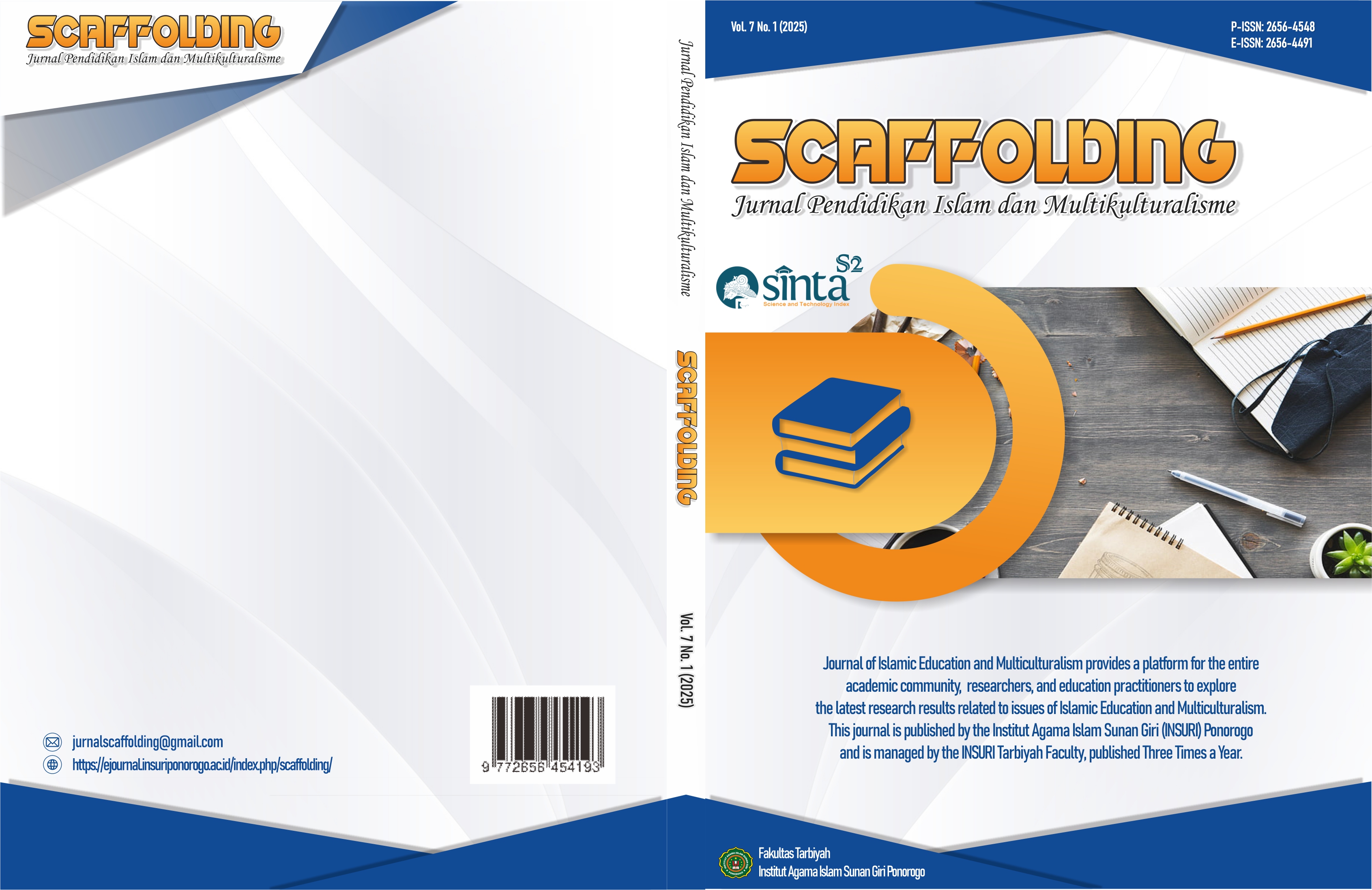Integration of Gender Equality in Islamic Education Curriculum: A Content Study on Elementary School Textbooks
DOI:
https://doi.org/10.37680/scaffolding.v7i1.7294Keywords:
Basic Education, Curriculum, Gender Equality, Islamic Religious Education, TextbooksAbstract
This study aims to explore the extent to which the principle of gender equality has been integrated in Islamic Religious Education textbooks at the elementary school level. The focus of the analysis is on the representation of the roles of men and women in the teaching materials used in the independent curriculum. The main data in this study are six Islamic Religious Education and Budi Pekerti textbooks for Grades 1 to 6, published by the Center for Curriculum and Bookkeeping, Research and Development, and Bookkeeping Agency, Ministry of Education and Culture of the Republic of Indonesia. These books include Islamic Religious Education and Ethics for Primary School Grade 1 by Muhammad Nurzakun and Joko Santoso in 2021, Islamic Religious Education and Ethics for Primary School Grade 2 by A. Zainal Abidin and Siti Kusrini in 2021, and Islamic Religious Education and Ethics for Primary School Grade 3 by Moh. Ghozali and Erwin Wasti in 2022, the book Islamic Religious Education and Ethics for Primary 4 by Ahmad Faozan and Jamaluddin in 2021, the book Islamic Religious Education and Ethics for Primary 5 by Soleh Baedowi and Hairil Muhammad Anwar in 2021, and the book Islamic Religious Education and Ethics for Primary 6 by Nazirwan and Kholili Abdullah in 2022. This research uses a qualitative method with content analysis of the text and illustrations of Islamic Religious Education textbooks. The results of this study show a consistent pattern of gender bias, where male characters are dominant in religious and social roles, while female characters tend to be passive and limited to domestic roles. So then it is necessary to reformulate the content of the textbook to be more responsive to gender, in order to realize a fair Islamic education in accordance with the value of rahmatan lil 'alamin.
Downloads
Published
How to Cite
Issue
Section
License
Copyright (c) 2025 Nur Annisa Fitria, Muhammad Syaikhul Arif, Abdul Muhid

This work is licensed under a Creative Commons Attribution-NonCommercial 4.0 International License.
Authors who publish with this journal agree to the following terms:
Authors retain copyright and grant the journal right of first publication with the work simultaneously licensed under a Creative Commons Attribution-NonCommercial 4.0 International License that allows others to share the work with an acknowledgement of the work's authorship and initial publication in this journal.
Authors are able to enter into separate, additional contractual arrangements for the non-exclusive distribution of the journal's published version of the work (e.g., post it to an institutional repository or publish it in a book), with an acknowledgement of its initial publication in this journal.
Authors are permitted and encouraged to post their work online (e.g., in institutional repositories or on their website) prior to and during the submission process, as it can lead to productive exchanges, as well as earlier and greater citation of published work.



